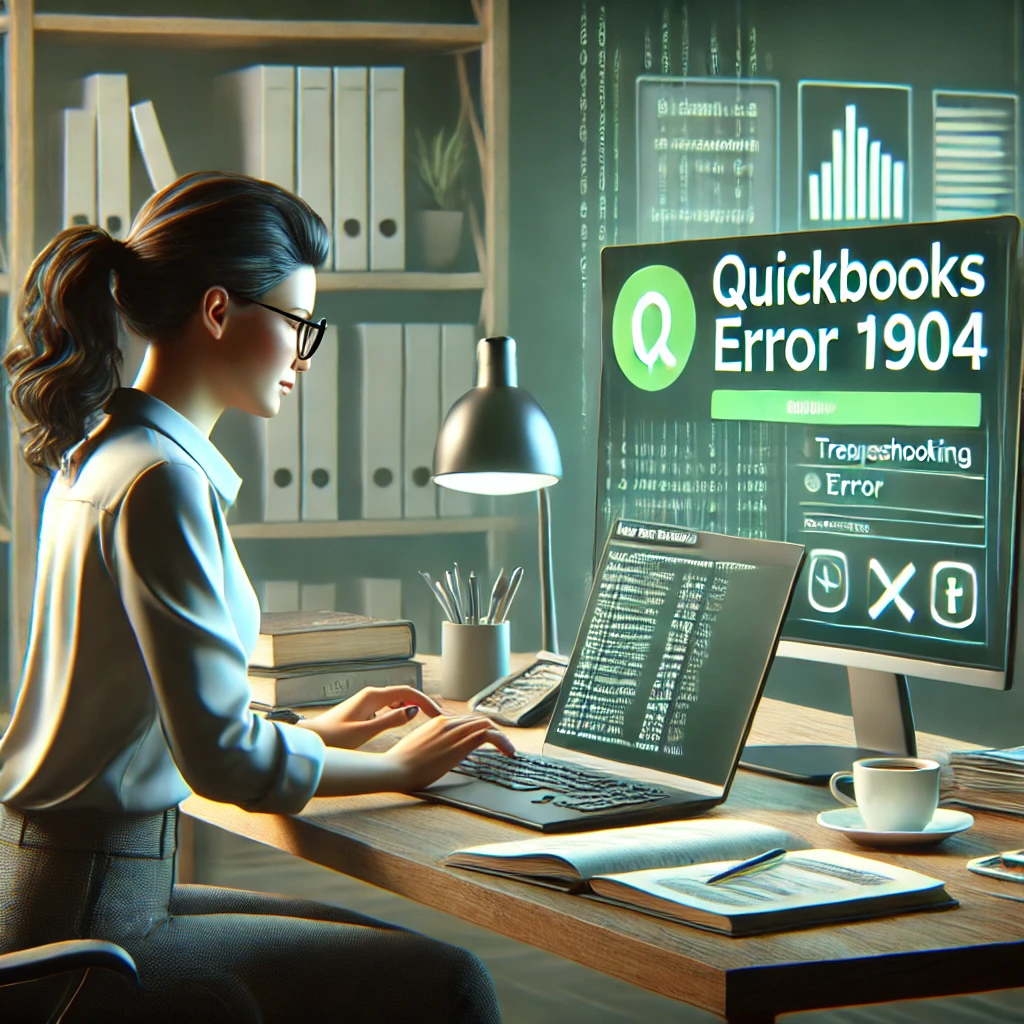How to Fix QuickBooks Error 1904: A Comprehensive Guide
QuickBooks is a versatile accounting software widely used by businesses of all sizes to manage their finances effectively. However, like any software, it is not immune to errors. One such error that users frequently encounter is QuickBooks Error 1904. This error typically occurs during the installation of QuickBooks and can be frustrating to deal with. In this guide, we’ll dive deep into understanding what QuickBooks Error 1904 is, its general causes, and provide a step-by-step troubleshooting solution to fix it. Let’s get started!
Table of Contents
Toggle
What is QuickBooks Error 1904?
QuickBooks Error 1904 is an installation error that usually appears with a message indicating that a specific file or component has failed to register during the installation process. The error message might look something like this.
This error is primarily seen when installing or updating QuickBooks and can prevent the software from functioning correctly. The error message typically includes the file name and path that failed to register, giving a clue about where the issue lies.
General Causes of QuickBooks Error 1904
Several factors can contribute to the occurrence of QuickBooks Error 1904. Understanding these causes can help prevent errors and ensure smooth installation. Here are some common reasons:
- Corrupt or Damaged Files: If the installation files are corrupt or damaged, it can result in Error 1904.
- Missing Microsoft Components: QuickBooks relies on specific Microsoft components to function correctly. If these components are missing or not updated, an error can occur.
- Insufficient Permissions: Lack of administrative privileges during installation can prevent the necessary files from being registered.
- Interference from Security Software: Sometimes, antivirus or firewall settings can block the installation process, leading to this error.
- Operating System Issues: Incompatible or outdated versions can also be a culprit.
Troubleshooting Solutions to Fix QuickBooks Error 1904
Now that we understand what QuickBooks Error 1904 is and its common causes, let’s move on to the solutions. Here are several methods you can try to resolve this error:
1. Restart Your Computer
A simple yet effective solution is to restart your computer. This can help reset any system changes and clear temporary issues that might be causing the error.
2. Run the QuickBooks Install Diagnostic Tool
The QuickBooks Install Diagnostic Tool is designed to automatically diagnose and fix issues with Microsoft components required by QuickBooks. Here’s how to use it:
Download the Tool:
- Download the QuickBooks Install Diagnostic Tool from the official Intuit website.
Run the Tool:
- Close all running programs and run the downloaded tool.
- It might take some time to complete the scan. Let it finish and then restart your computer.
3. Update Your Windows Operating System
Ensuring that your Windows OS is up-to-date can resolve compatibility issues. Follow these steps:
Check for Updates:
- Go to Settings > Update & Security > Windows Update.
- Click on Check for updates and install any available updates.
Restart Your Computer:
- After installing the updates, restart your computer and try installing QuickBooks again.
4. Give Full Control to QuickBooks Installation Folders
Lack of necessary permissions can cause installation errors. Granting full control to QuickBooks folders can help:
Navigate to the Folder:
- Go to the folder where QuickBooks is being installed (e.g.,
C:\Program Files\Intuit\QuickBooks).
- Go to the folder where QuickBooks is being installed (e.g.,
Change Permissions:
- Right-click on the folder and select Properties.
- Go to the Security tab and click on Edit.
- Select Users and check the box for Full control.
- Click Apply and OK to save the changes.
5. Temporarily Disable Antivirus and Firewall
Security software can sometimes interfere with the installation process. Temporarily disabling them might resolve the issue:
Disable Antivirus:
- Open your antivirus software and look for an option to disable it temporarily.
- Note: Remember to re-enable your antivirus after the installation.
Disable Firewall:
- Go to Control Panel > System and Security > Windows Defender Firewall.
- Click on Turn Windows Defender Firewall on or off and select Turn off Windows Defender Firewall for both private and public networks.
6. Register the File Manually
If the error message specifies a particular file, you can try registering it manually:
Open Command Prompt as Administrator:
- Press Windows + R, type
cmd, and press Ctrl + Shift + Enter to open it with administrative privileges.
- Press Windows + R, type
Register the File:
- Type
regsvr32 [file path/name]and press Enter. For example:less
- Type
Restart Your Computer:
- After registering the file, restart your computer and try installing QuickBooks again.
7. Perform a Clean Install of QuickBooks
A clean install can help resolve persistent installation issues. Here’s how to do it:
Uninstall QuickBooks:
- Go to Control Panel > Programs > Programs and Features.
- Select QuickBooks and click Uninstall.
Rename Installation Folders:
- Rename the following folders by adding
.oldto the end of the folder names:C:\ProgramData\Intuit\QuickBooksC:\Users\[Your User Name]\AppData\Local\Intuit\QuickBooksC:\Program Files\Intuit\QuickBooksC:\Program Files (x86)\Intuit\QuickBooks
- Rename the following folders by adding
Reinstall QuickBooks:
- Download the latest version of QuickBooks from the official website.
- Run the installer and follow the on-screen instructions.
Conclusion
QuickBooks Error 1904 can be a hindrance, but with the right approach, it is indeed fixable. By understanding the root causes and applying the troubleshooting steps outlined above, you can resolve the error and ensure a smooth installation process for QuickBooks. Remember always to keep your software and operating system updated and maintain proper permissions to avoid such issues in the future.
